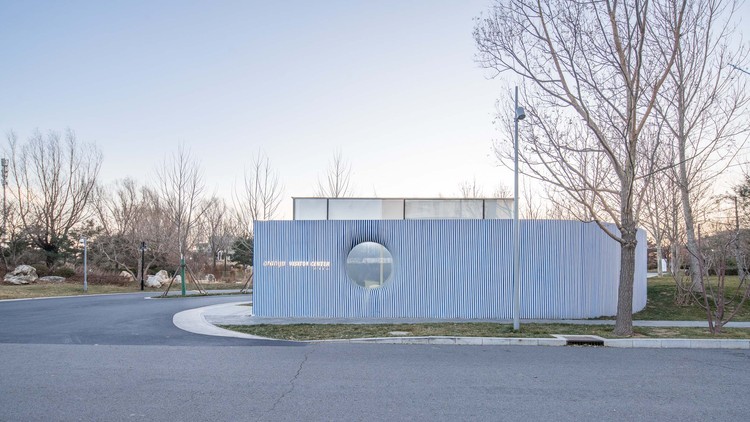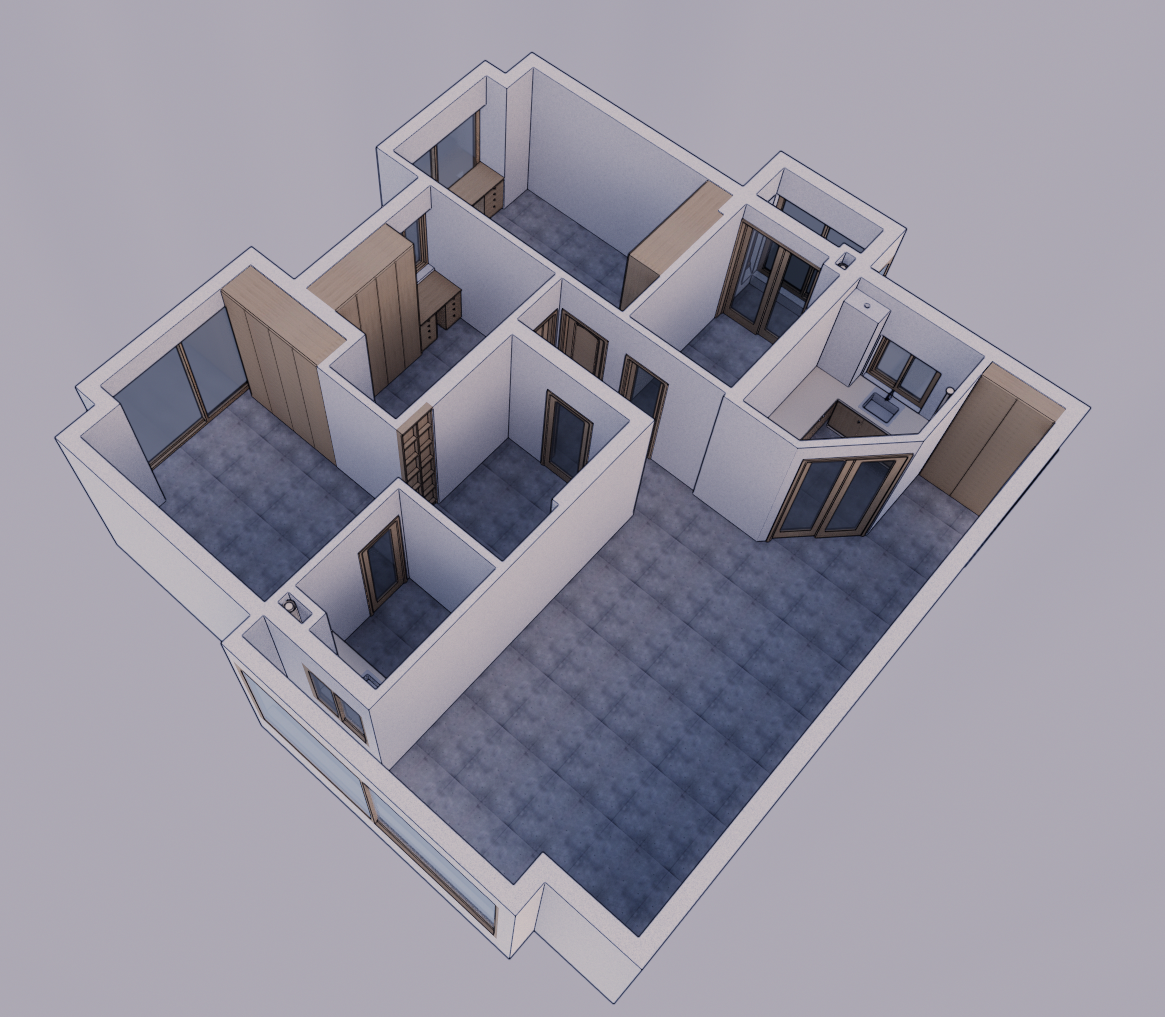Tiny Home for a Tall Guy Julius Taminiau Architects
2018-12-04 14:00
“幸福的秘诀不在于追求更多,而在于培养享受更少乐趣的能力。”苏格拉底,为一个高个子建一个小房子听起来有点矛盾,但最终却成了一个高个子的大家。结果表明,35平方米足够大,足以创造一个宽敞的感觉,崇高的家。
“The secret of happiness is not found in seeking more, but in developing the capacity to enjoy less.” Socrates It sounds a bit contradictory to build a tiny home for a tall guy but it actually ends up to be a large home for a tall guy. It turns out that 35 m2 is big enough to create a spacious feeling lofty home.
“The secret of happiness is not found in seeking more, but in developing the capacity to enjoy less.” Socrates It sounds a bit contradictory to build a tiny home for a tall guy but it actually ends up to be a large home for a tall guy. It turns out that 35 m2 is big enough to create a spacious feeling lofty home.
简短的是要建立一个和谐,宽敞的感觉和明亮的家园,丰富的储藏。客户想要故意减少空间。为了保持他的“足迹”很小,并且因为他认为他必须非常有意识地填充空间-或者保持空间是空的-从而限制不必要的东西。他想要最大限度地利用一个小空间,质量高于数量,因为这个概念,我们喜欢在这个小项目上工作。显然,这样做的另一个好处是,他可以在高质量的建筑上花更多的钱,而在数量上的垃圾空间上可以
The brief was to build a harmonious, spacious feeling and bright home with plenty of storage. The client wanted to use deliberately less space. To keep his “footprint” small and because he thought he had to be very conscious about filling the space - or keeping the space empty - and therefore limiting unnecessary stuff. He wanted to make the most out of a small space, quality above quantity, and because of this concept, we loved to work on this small project. Obviously, another benefit of this is that he could spend more money on quality architecture and less on quantity rubbish space.
The brief was to build a harmonious, spacious feeling and bright home with plenty of storage. The client wanted to use deliberately less space. To keep his “footprint” small and because he thought he had to be very conscious about filling the space - or keeping the space empty - and therefore limiting unnecessary stuff. He wanted to make the most out of a small space, quality above quantity, and because of this concept, we loved to work on this small project. Obviously, another benefit of this is that he could spend more money on quality architecture and less on quantity rubbish space.
我们希望这个空间尽可能的宽敞,在这么小的空间里,我们想保持它的简单,摆脱不必要的元素,通过使用设计和制作来测量的小而轻的材料来创造一个一致的开放空间。我们相信这种极简主义的方法强调空间,一些精心挑选的中性和自然材料以及一些个人物品。
We wanted the space to feel as spacious as possible and in such a small space we thought to keep it simple and get rid of unnecessary elements to create one consistent open space by using little and light materials designed and made to measure. We believe this minimalistic approach emphasizes the space, a few well picked - neutral and natural - materials and some personal belongings.
We wanted the space to feel as spacious as possible and in such a small space we thought to keep it simple and get rid of unnecessary elements to create one consistent open space by using little and light materials designed and made to measure. We believe this minimalistic approach emphasizes the space, a few well picked - neutral and natural - materials and some personal belongings.
这些天(在阿姆斯特丹),跳过建筑师直接去找承包商是很常见的,这常常导致乏味(质量差)的建筑和内部准备在5到10年内被拆除。我们想要做的相反,跳过承包商,创造一个鼓舞人心的内部和建筑与一个紧凑的预算,工作与透明和共享的材料和劳动力成本表。客户每小时向每个人支付工资,所有材料都由他自己直接支付。这导致了更少的压力和更多的信任。
These days (in Amsterdam) it’s very common to skip the architect and go directly to the contractor which often results in dull (bad quality) architecture and interiors ready for demolishment in 5 to 10 years. We wanted to do the opposite, skip the contractor and create an inspiring interior and architecture with a tight budget by working with a transparent and shared material and labor cost sheet. The client paid everybody on an hourly rate and all the materials directly himself. This resulted in less stress and more trust.
These days (in Amsterdam) it’s very common to skip the architect and go directly to the contractor which often results in dull (bad quality) architecture and interiors ready for demolishment in 5 to 10 years. We wanted to do the opposite, skip the contractor and create an inspiring interior and architecture with a tight budget by working with a transparent and shared material and labor cost sheet. The client paid everybody on an hourly rate and all the materials directly himself. This resulted in less stress and more trust.
在三维CAD中,我们设计了测量1:1的一切,并将设计输出到定单中,直接从供应商那里订购材料。这样,我们就可以从供应商那里订购材料,而不需要任何中间商,也不需要承包商(导致错误少得多)。下一步是制作简单的装配图纸,可供任何能拿起螺丝刀的人阅读和制作。
We designed everything made to measure 1:1 in 3D CAD and exported the design into an ordering list to directly order the materials from the supplier. In this way, we were able to order the materials from the supplier without engaging any middlemen and not needing a contractor (resulting in much fewer mistakes). The next step was to make simple assembling drawings that can be read and built by anyone who can hold a screwdriver.
We designed everything made to measure 1:1 in 3D CAD and exported the design into an ordering list to directly order the materials from the supplier. In this way, we were able to order the materials from the supplier without engaging any middlemen and not needing a contractor (resulting in much fewer mistakes). The next step was to make simple assembling drawings that can be read and built by anyone who can hold a screwdriver.
考虑到我们的预算紧张,我们邀请了。建筑和木工)学生在装配过程中,这导致了建设性的合作,我们节省了劳动力成本,而学生能够通过实践学习。更具体的工作,如管道和电力,是由专家完成的,他们愿意与学生合作并分享他们的技能,空间被设想为一个空间。只有一堵分隔墙(白色实木),入口、浴室和洗衣房都有隐蔽的门。
Considering our tight budget, we invited (i.a. architecture and carpentry) students in the assembling process which resulted in a constructive collaboration where we saved on labor cost while students were able to learn by practice. More specific work, such as plumbing and electricity, was done by specialists which were willing to cooperate with students and share their skills. The space is conceived as one space. There is only one dividing (white solid timber) wall with concealed doors hiding the entrance, bathroom and laundry room.
Considering our tight budget, we invited (i.a. architecture and carpentry) students in the assembling process which resulted in a constructive collaboration where we saved on labor cost while students were able to learn by practice. More specific work, such as plumbing and electricity, was done by specialists which were willing to cooperate with students and share their skills. The space is conceived as one space. There is only one dividing (white solid timber) wall with concealed doors hiding the entrance, bathroom and laundry room.
在床和生活区之间是一个空间分隔柜,中间有一个倾斜的开口。这使得光和潜偷看在另一个空间中,同时仍然提供足够的隐私。为了保持一个一致的外观,我们设计了厨房,这样,乍一看就像是一件家具,例如烤箱、提取器和微波炉等厨房设备。因为这是一个翻新工作,所以我们不得不在这里工作,例如升级的浴室地板和散热器。我们实际上使用这些“问题”作为一个设计机会,并构建了散热器盖,它还用作座椅和一个凸起的地板,它可以巧妙地打破空间。
In between the bed and the living area is a space dividing cabinet with a slatted opening in the middle. This enables light and a sneak peek in the other space while still providing enough privacy. To maintain a consistent look we designed the kitchen in such a way that at first sight seems like a piece of furniture by concealing kitchen equipment such as an oven, extractor, and microwave. Since this was a refurbishment job we had to work around e.g. the raised bathroom floor and radiators. We actually used those “problems” as a design opportunity and build radiator covers which also function as seating and a raised floor which subtlety breaks the space.
In between the bed and the living area is a space dividing cabinet with a slatted opening in the middle. This enables light and a sneak peek in the other space while still providing enough privacy. To maintain a consistent look we designed the kitchen in such a way that at first sight seems like a piece of furniture by concealing kitchen equipment such as an oven, extractor, and microwave. Since this was a refurbishment job we had to work around e.g. the raised bathroom floor and radiators. We actually used those “problems” as a design opportunity and build radiator covers which also function as seating and a raised floor which subtlety breaks the space.
客户以前有一张折叠床,只有当客人来的时候,他才会关闭,因此不能很好地运作,据他说。因此,我们设计了一张特大床,也可以用作舒适的座位或阅读空间。这种气氛是通过将床抬高一米来形成的,也是为了在下面创造额外的存储空间。我们非常幸运,客户希望并相信这种新的建设方式,并愿意花他的钱和信任在这个(风险)试点项目。
The client previously had a folding bed which he would only close whenever there were guests and therefore didn’t function very well according to him. Therefore, we designed an extra large bed which could also be used as a cozy seating or reading space. This atmosphere was elaborated by elevating the bed one meter, also to create extra storage space below. We were very lucky the client wanted and believed in this new way of building and was willing to spend his money and trust on this (risky) pilot project.
The client previously had a folding bed which he would only close whenever there were guests and therefore didn’t function very well according to him. Therefore, we designed an extra large bed which could also be used as a cozy seating or reading space. This atmosphere was elaborated by elevating the bed one meter, also to create extra storage space below. We were very lucky the client wanted and believed in this new way of building and was willing to spend his money and trust on this (risky) pilot project.
Architects Julius Taminiau Architects
Location Amsterdam, The Netherlands
Photographs Norbert Wunderling
Category Houses Interiors
 举报
举报
别默默的看了,快登录帮我评论一下吧!:)
注册
登录
更多评论
相关文章
-

描边风设计中,最容易犯的8种问题分析
2018年走过了四分之一,LOGO设计趋势也清晰了LOGO设计
-

描边风设计中,最容易犯的8种问题分析
2018年走过了四分之一,LOGO设计趋势也清晰了LOGO设计
-

描边风设计中,最容易犯的8种问题分析
2018年走过了四分之一,LOGO设计趋势也清晰了LOGO设计




































































